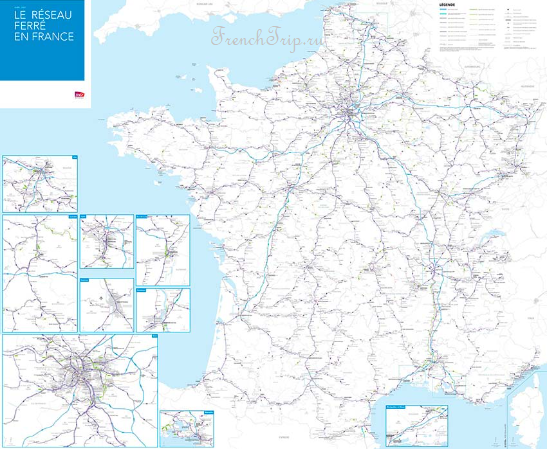Trains in France
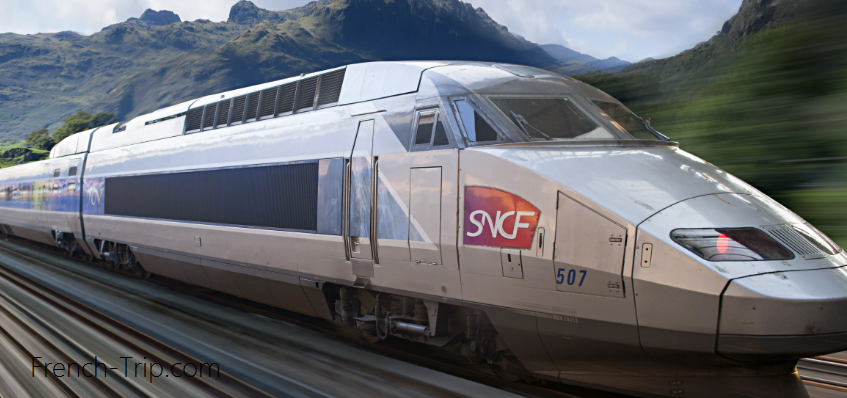
Explore the comfort and convenience of train travel in France with our comprehensive guide. Learn about TGV high-speed trains, regional TER services, ticket options, child travel policies, and station facilities. Plan your journey with tips on buying tickets, train punctuality, and navigating French train stations. Travel smart and enjoy the beauty of France by rail.
Trains in France
In general, trains in France offer a quite comfortable and often budget-friendly way to travel across the country. However, they are not always the most convenient or the cheapest option — this depends on the situation. For detailed information, see here: how to travel more cheaply in France.
If traveling long distances for 1–2 people and purchasing tickets well in advance, especially during sales, trains are likely to be the most cost-effective option. Compared to buses, trains in France can be a more predictable option: after all, they don’t face road traffic, and trains are generally quite punctual. But… only in case there are no strikes or cancellations (and strikes happen often in France!). Also, it can depend on the region; places like Corsica may have trains that are somewhat unreliable. On the other hand, there are areas where trains will be the simplest, most reliable, and economical way to travel (for example, in the French Riviera with its traffic jams during peak season, trains might be the only way to arrive on time).
Overall, trains in France are a good option for travel if you prepare well.
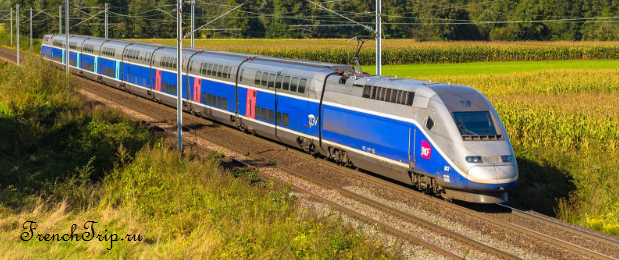
Types of Trains in France
Unlike trains in neighboring countries, most SNCF trains do not run at regular intervals (e.g., at the same time every hour). Schedules can be unstable (with breaks for lunch, significantly fewer services on weekends, especially on Sundays), and transfers between, say, TGV and regional TER trains can be inconvenient. However, with careful planning, traveling by train in France can be comfortable and affordable.
There are 5 main types of SNCF trains in France: TGV, Ouigo, Intercités, TER, and RER.
TGV Trains
The famous French high-speed trains have revolutionized rail travel in France since 1981 (in areas with TGV service, domestic flights have virtually disappeared). TGV trains can reach speeds of up to 320 km/h on special tracks. The network is constantly expanding, and TGV routes lead to:
- Brittany and Bordeaux (opened in 2017)
- Southeast to Lyon and Marseille, extending through Montpellier to Barcelona
- East to Strasbourg and Switzerland
- North to Lille, Calais, and Belgium
TGV trains also run on regular tracks at regular speeds, for instance, the high-speed train from Paris to Marseille, which then continues at a regular speed to Nice.
- TGV trains are comfortable. The seating is 1+2 in First Class and 2+2 in Second Class.
- Seats facing one direction (which may not align with the direction of travel) offer the most legroom. Other seats are arranged facing each other with a table in between.
- Some TGV trains have two levels, offering great views from the upper floor.
- All TGV tickets include seat reservations.
- Most TGV trains have a café and a changing room to clean up a baby.
- All trains are equipped with toilets.
- Most TGV trains have power outlets at each seat, and many now offer free Wi-Fi.
- Typically, the TGV vestibules are very small. It’s impractical to leave a stroller in the aisle; it needs to be folded and stored in the luggage racks (available in each car).
Ouigo
- Ouigo is SNCF’s low-cost, no-frills version of high-speed train service.
- It uses special TGV trains without a First Class; some seats are more cramped than those on regular TGV Second Class.
- Fares start from €10 when purchased in advance; the ticket includes a seat reservation.
- Seating arrangements and detailed information can be found on oui.sncf.
- Tickets are non-refundable but can be exchanged for another Ouigo train for an additional fee.
- Trains do not depart from central Paris but use suburban stations accessible by RER.
- It serves 19 cities, including Strasbourg, Lyon, Marseille, and Bordeaux.
Intercités
- Intercités are regular long-distance trains used on routes not covered by TGV, such as Paris to Limoges.
- These trains are reservation-only; you cannot simply hop on and off.
- Trains come in First and Second Class, and some seats are in classic compartments.
TER trains
TER (Transport express régional) trains are local regional trains in France managed at the regional level. Each French region defines its own service levels, so some lines may run frequently while others may have only one or two trains per day.
- The schedule for regional trains is not always optimized for high-speed TGV and Intercités services.
- Trains range from modern, comfortable double-decker ones (e.g., Paris to Rouen) to old and dirty ones (e.g., many running on the French Riviera from Marseille to Cannes, Nice, and beyond).
- Fares are fixed, and seats are not reserved (you can sit anywhere that is free). If you bought a ticket for a specific train, but is late, you are allowed to use another train at the same day, as price range is flat.
- TER trains can be used with country-wide tourist passes like InterRail.
More details: Regional trains in France (TER)
RER trains
- RER (Réseau Express Régional) are suburban trains in Paris and its surrounding areas.
- They used to be much faster for traveling across Paris compared to the Metro.
- They serve the suburbs as well as airports and popular destinations like Disneyland Paris and Versailles.
Trains route map
Route map of all trains in France (TER, INTERCITÉS, and the entire SNCF railway network):
Useful Information About Trains in France
- There is no checked luggage. You can take as much as you can fit in the overhead rack or under the seat, or in the racks at the end of some carriages. This can be a problem on regional express trains between Paris and Charles de Gaulle and Orly airports, where there is little space for bags and it can be cramped.
- Almost all trains are air-conditioned. However, it can still be quite stuffy in trains.
- SNCF has discontinued almost all night trains, and the few remaining are likely to be canceled soon.
- TGV trains from Paris to Switzerland are sold as TGV Lyria; other international TGV trains to Germany, Italy, and Spain do not have special markings.
- High-speed trains like TGV to Belgium and beyond are serviced by Thalys, while Eurostar operates the famous trains to London.
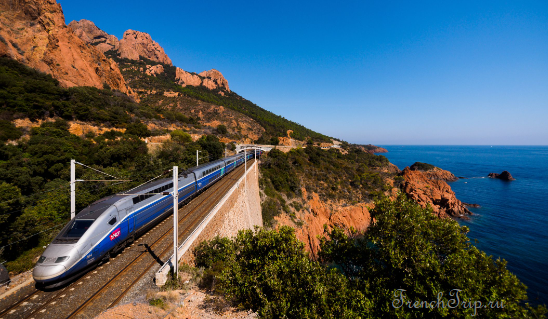
Ticket Prices for Trains in France
Ticket prices vary more by time and day of departure than by train type. Prices can vary significantly, from 30 euros to 150 euros, with the average standard price around 110 euros. If you want to save money: carefully choose your travel time. Cheap tickets are likely to be for departures around 6 a.m. or arrivals after midnight. This is more related to TGV trains, while TER trains are mainly fixed-price.
Also, watch out for promotions: occasionally, there are limited-time offers where, for example, you can travel from Colmar to Paris for just 20 euros on a high-speed TGV, which is about 3-4 times cheaper than regular tickets. The choice of departure times is quite extensive. These tickets sell out quickly, with the cheapest ones going first. Once, we traveled to Paris in 1st class, with tickets cheaper than 2nd class because there were “promotional” tickets available for 1st class, while 2nd class tickets were all sold out and only regular ones remained.
Children under 4 years old traveling on your lap travel free even on expensive TGV trains. If a seat is required, the fare for toddlers on TGV trains is 15 euros, regardless of the trip’s length.
Children aged 4-11 have a discounted fare.
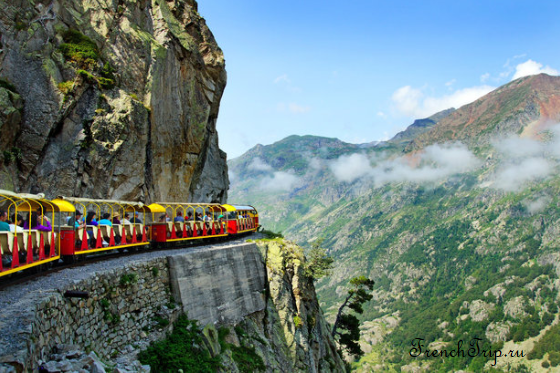
How to Save on Trains in France
Think in advance
The only way to save the most on train tickets in France is to buy tickets in advance during special promotions. Savings can be very significant. For instance, a high-speed TGV from Paris to a distant city may cost 30-35 euros on promotion, compared to the usual 100-150 euros!
To avoid missing promotions, either regularly check the official French railways website (www.sncf.com) or subscribe to their newsletter. Promotions usually occur in the spring, at Easter, and around New Year.
Be flexible
Try adjusting your travel dates a bit. For instance, if you travel far on the first weekend of a holiday or extended break, prices can be very high. But if you shift your travel date by a couple of days, the price may drop significantly!
Use Rail Pass
You can also buy an InterRail One Country Pass — France, which allows unlimited travel on trains in France for a certain number of days withing 1 month. But! Keep in mind that these passes do not apply to TGV trains, only to regional TER! This is because all TGV tickets are sold with seat reservations and are often more expensive. On the other hand, you can use passes on regional trains.
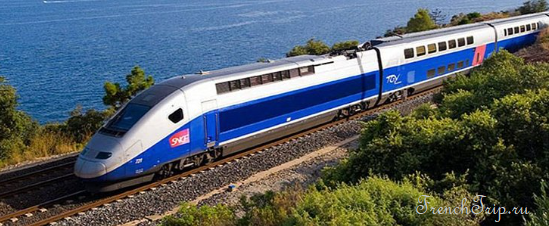
Train Schedules
Train schedules can be viewed on the official French railway website: www.sncf.com. Typically, schedules are arranged differently for weekdays, Saturdays, and Sundays and for different seasons. On weekdays, there are more morning trains, while on Sundays, there are more evening trains (and they are later). There may be fewer trains during lunch hours compared to other times of the day.
Schedules can also differ during holiday periods or school terms. It’s advisable to check the schedule for the specific day you need, as even the day before can be quite different.
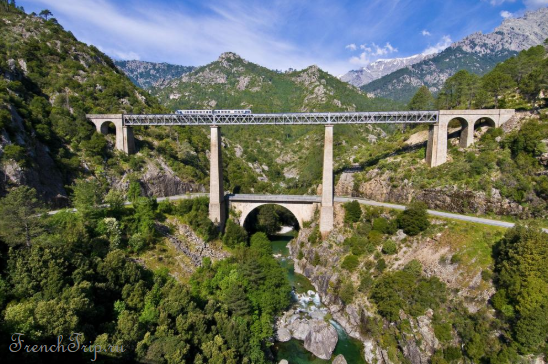
Buying Train Tickets
Train tickets in France can be bought at:
- ticket office — paper tickets must be validated before your trip
- ticket machine — paper tickets must be validated before your trip
- official website (personal data for each passanger has to be entered) — print out the electronic version of the ticket.
- official app (personal data for each passanger has to be entered) — tickets can be shown in app
On regional trains, seats are usually not numbered. That is, you just buy a ticket (similar to a bus ticket — without a reserved seat). However, on TGV trains, you usually need to reserve a seat, meaning the ticket is purchased for a specific train, carriage and seat number. Tickets are also available in electronic version to be printed.
There are first and second-class carriages, and the price varies accordingly. Traveling with a second-class ticket in a first-class carriage is considered traveling without a ticket and is subject to a fine.
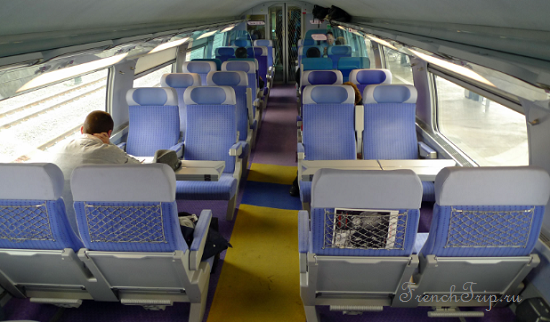
Discounts for children
- Children are entitled to a discounted fare, but the discount depends on the destination and distance of the route; there is no simplified 50% tariff for children.
- Children under 4 years old can travel for free on their parents’ laps.
- If a separate seat is needed for the child, a ticket must be purchased, specifying the child’s age. For example, we traveled to Paris and booked a seat in a TGV train carriage for a child under one year old for 15 euros (in 2022). These 15 euros did not significantly depend on the travel distance (Zurich — Paris and Paris — Basel — we paid the same 15 euros for the child).
- For regional TER trains, the fare for a child under one year old is set separately depending on the route.
Validation
For travel on regional trains in France, a paper ticket must be validated in a machine before boarding the train. These yellow machines are located on the platforms (photo below). An unvalidated ticket is considered invalid.
For high-speed TGV or regional TER trains with a specified departure time and seat, ticket validation is not necessary. For example, if you bought your ticket online and it is displayed in electronic form, it is sufficient to show the ticket and identity documents to the conductor.

Travelling with Tourist Rail Pass for France
If you are traveling in France with a train pass, be sure to check if your train requires a seat reservation. All TGV and long-distance Intercité trains require seat reservations, even if you are using a rail pass to pay for the trip.
Book your seat online at oui.sncf.com in first or second class. Select the desired train and change the option “No discount card” to “Pass Interrail – Global Pass,” which works for both Eurail and InterRail passes. You will then be allowed to choose the class of service and seat. The fare should indicate 5–18 euros. Purchase the reservation like a regular ticket and use it along with your train pass.
Note that for reserving seats on some international TGV trains (such as Lyria to Switzerland), you may need to use the raileurope.com website, which may include an additional fee. First, try oui.sncf.com, and if you do not get a fare of 5-18 euros, switch websites.
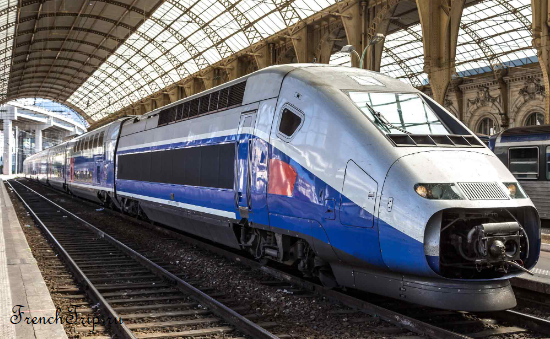
When to Buy Train Tickets in France?
Tickets with seat reservations for trains are priced similarly to airline tickets: the earlier you buy, the cheaper the seat. Ticket sales usually open 92 days before departure. Advance purchase fares can be up to 75% less than full-price tickets bought on the day of travel.
Reserved train tickets include seat reservations and are only valid for a specific seat on a particular train.
Reserved train tickets come in three types:
- Pro (also known as Flexi) – Full fare and only valid for a specific train, but can be changed or refunded without a fee.
- Loisir (also known as Leisure) – Discounted fares that can be changed to another train for a variable fee.
- Prems (also known as Book Early) – Cheap tickets that cannot be exchanged or refunded.
Suburban and short-distance trains without reservations (e.g., TER and RER) have fixed prices, so there is no need to buy a ticket in advance to save money. You can wait until you are at the station and buy a ticket just before departure.
Children’s Fares
Children’s fares (for children aged 4 to 11) offer savings of about 20% off the cheapest fare in each class.
Children under 4 years old travel for free if they sit on an adult’s lap. However, for TGV travel, even infants need a ticket. If the child travels with their own seat rather than on a lap, the additional charge is usually 15€, regardless of the route length (for TGV and Intercités, not for regional TER trains).
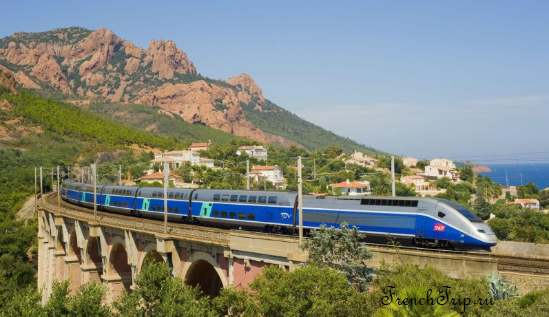
Buying Train Tickets in France
All SNCF stations have ticket machines that accept cash and credit cards. However, they are not suitable for purchasing cheap tickets in advance; they are best used for same-day sales. Ticket offices are only available at larger stations, and their operating hours can be inconsistent.
Paper tickets (except those printed at home, but including tickets bought from ticket machines and station counters) must be validated using the yellow validation machines on train platforms before boarding.
If you purchased your ticket online and need to collect it from a machine at the station, be sure to bring the credit card you used for the purchase, as it may be required for verification.
Train Comfort
Comfort during travel can be a decisive factor when choosing a mode of transport. Trains in France vary greatly in terms of comfort but generally maintain a good European standard. High-speed TGV trains are very comfortable, with toilets, food service, and power outlets at the seats. Many seats face each other, so you can sit together as a family. First-class carriages are even more comfortable, with more luxurious seats. The trains offer Wi-Fi, and one carriage in high-speed TGV trains is equipped with a restaurant.
Regional TER trains‘ condition depends on the region/route. Some are better, some are worse, but overall, they are decent. The only ones I disliked were the trains along the French Riviera — quite worn out, with graffiti in places, only one functioning toilet in the entire train, which was very dirty and had a stuck lock (a man got stuck inside and had to knock and ask for help from other passengers to find someone responsible to open the door). This was the only such horrible experience, but the fact that it happened on the luxurious French Riviera was especially surprising. However, for instance, the TER from Paris to Rouen was even nicer and somehow roomier than the high-speed TGV to Paris.
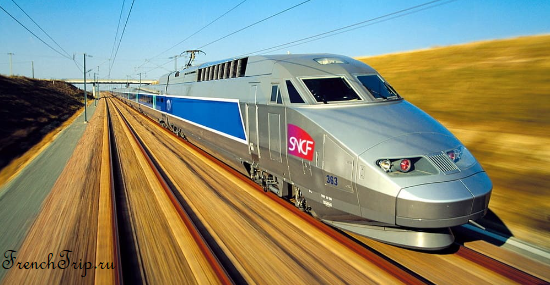
Travelling With Babies
High-speed TGV trains even have a carriage with a changing table (this information is displayed on the information screens). In regional TER trains, which can also be quite comfortable and double-decker with toilets, no changing tables were observed. We had to change the baby in the vestibule, placing them on the stroller. But at least there was a vestibule: in the TGV, the aisles are so narrow, and the vestibule almost non-existent, that it was impossible to leave the stroller unfolded. Even if there was space for the stroller, due to the constant flow of people heading to the dining car, we had to fold the stroller and put the baby to sleep in the carrier while standing.
Overall, trains can be more comfortable than buses due to the larger personal space and higher travel speed. The downside: many train stations in France are NOT equipped with elevators or escalators, so you have to carry your luggage/stroller up and down the stairs yourself. Not a pleasant experience.
Punctuality of Trains
As for punctuality, trains in France generally run quite on schedule, unless there are strikes. For instance, we once got stuck near Versailles on the day of our flight, as trains were being canceled en masse, and all announcements were made in French, which we did not understand. Typical French care for tourists, indeed…
However, during our other trips, the trains, especially TGVs, departed with minute precision. Although the train might arrive just 5 minutes before departure, creating chaos with people rushing up narrow stairs with their luggage, everyone managed to board in time despite the baggage and small children.
In summary, high-speed TGVs are comfortable, fast, punctual, and expensive (though there are promotions that make them quite affordable!). Regional TERs are at a mid-European level, not scary to travel on, but their quality varies by route. Comfort levels can even be better than TGVs, but they can also be old, graffiti-covered trains with broken toilets.
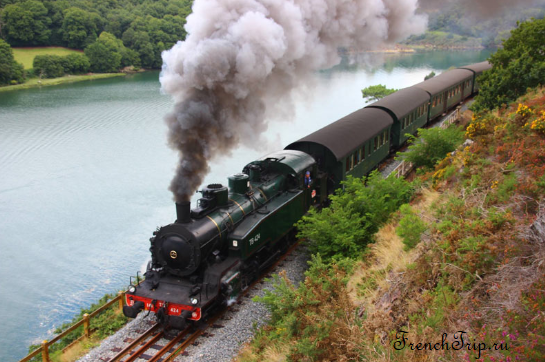
Travel time by train from Paris
Approximate travel time from Paris to other cities in France:
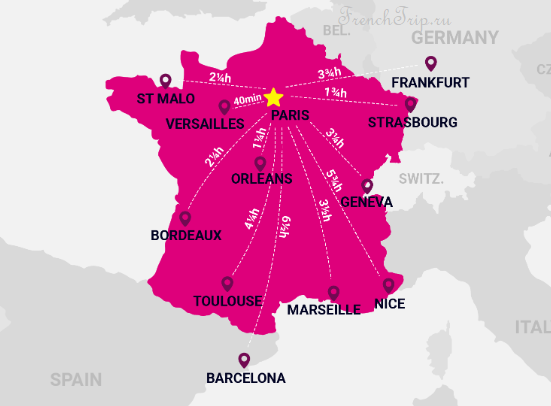
Paris – Barcelona: TGV* – 6.5 hours
Paris – Bordeaux: TGV – 2¼ hours
Paris – Frankfurt, Germany: TGV* – 3¾ hours
Paris – Geneva, Switzerland TGV* – 3¼ hours
Paris – Lyon: TGV – 2 hours
Paris – Marseille: TGV – 3.5 hours
Paris – Nice: TGV* – 5¾ hours
Paris – Orleans: Intercité – 1¼ hours
Paris – Saint-Malo: TGV* – 2¼ hours
Paris – Strasbourg: TGV – 1¾ hours
Paris – Toulouse: TGV* – 4¼ hours
Paris – Versailles: RER – 40 minutes
*TGV trains run on regular tracks for part of their journey.
Related links:
Archives
Calendar
| M | T | W | T | F | S | S |
|---|---|---|---|---|---|---|
| 1 | 2 | 3 | 4 | 5 | 6 | 7 |
| 8 | 9 | 10 | 11 | 12 | 13 | 14 |
| 15 | 16 | 17 | 18 | 19 | 20 | 21 |
| 22 | 23 | 24 | 25 | 26 | 27 | 28 |
| 29 | 30 | 31 | ||||




